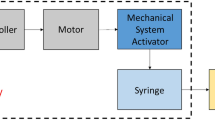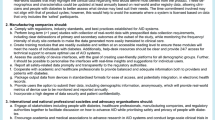Abstract
Diabetes technology has rapidly evolved, and insulin infusion pumps (IIPs) have gained worldwide acceptance in diabetes care. The safety of medical equipment is highly discussed, imposing complex challenges in its use. The accuracy of IIPs can be determined through laboratory tests, generally following the IEC 60601-2-24 protocol. Studies have evaluated the accuracy and precision of IIPs, and there are discrepant results. So, we conducted a Systematic Literature Review to assess the methodologies used to evaluate the accuracy of IIPs, organizing the findings in a compiled perspective. The methodology was based on Kitchenham and Biolchini guidelines, and when possible it was carried out the Bayesian meta-analyses to compare the accuracy of IIPs. Most studies used the microgravimetric technique to evaluate the device accuracy, and some proposed adaptations for the standard protocol. The variation of results was recurrent, and the establishment of a protocol, especially to evaluate patch pumps, is necessary. The present study gives enough data to understand the scenario of the IIPs evaluation, as well as the different protocols that can be explored for its evaluation. This highlights the need for a reliable, practical, and low-cost methodology to assist the evaluation of IIPs.
Similar content being viewed by others
Abbreviations
- CSII:
-
Continuous subcutaneous insulin infusion
- DM:
-
Diabetes Mellitus
- HPD:
-
Highest posterior density
- IEEE:
-
Institute of electrical and electronics engineers
- IEC:
-
International electrotechnical commission
- IIPs:
-
Insulin infusion pumps
- MARD:
-
Mean absolute relative dispersion
- PIV:
-
Particle image velocimetry
- RQ:
-
Research question
- SLR:
-
Systematic Literature Review
- T1D:
-
Type 1 Diabetes Mellitus
- T2D:
-
Type 2 Diabetes Mellitus
References
ABNT, N. IEC 60601-2-24: Requisitos particulares para a segunrança básica e o desempenho essencial de bombas de infusão e de controladores de infusão. 2005.
ADA, A. D. A. Diagnosis and classification of diabetes mellitus. Diabetes Care 31, 2008.
ADA, A. D. A. Standards of medical care in diabetes. Turkish J. Endocrinol. Metab. 14:11–16, 2010.
Berget, C., L. H. Messer, and G. P. Forlenza. A clinical overview of insulin pump therapy for the management of diabetes: past, present, and future of intensive therapy. Diabetes Spectr. 32:194–204, 2019.
Biolchini, J., P. G. Mian, A. C. C. Natali, and G. H. Travassos. Systematic review in software engineering. Syst. Eng. Comput. Sci. Dep. COPPE/UFRJ 107:32–37, 2005.
Borot, S., S. Franc, J. Cristante, A. Penfornis, P. Y. Benhamou, B. Guerci, H. Hanaire, E. Renard, Y. Reznik, C. Simon, and G. Charpentier. Accuracy of a new patch pump based on a microelectromechanical system (MEMS) compared to other commercially available insulin pumps: Results of the first in vitro and in vivo studies. J. Diabetes Sci. Technol. 8:1133–1141, 2014.
Bowen, J. L., and C. J. Allender. A comparative pulse accuracy study of two commercially available patch insulin infusion pumps. Eur. Endocrinol. 12:79–84, 2016.
Coskun, H., O. Gul, O. Ferhanoglu, and Y. D. Gokdel. Design and implementation of a low-cost high-performance syringe pump system. 21st Natl. Biomed. Eng. Meet. BIYOMUT. 2017(1–4):2018, 2017. https://doi.org/10.1109/BIYOMUT.2017.8478979.
Daneman, D., M. Frank, K. Perlman, and J. Wittenberg. The infant and toddler with diabetes: challenges of diagnosis and management. Paediatr Child Heal. 4:57–64, 1999.
Davi Moreno, E. Segurança em Sistemas Embarcados Modernos Desafios e Tendências. 2015.
Dreon, D. M., T. M. Hannon, B. Cross, B. J. Carter, N. S. Mercer, J. H. Nguyen, A. Tran, P. A. Melendez, N. Morales, J. E. Nelson, and M. H. Tan. Laboratory and benchtop performance of a mealtime insulin-delivery system. J. Diabetes Sci. Technol. 12:817–827, 2018.
Dumont-Fillon, D., H. Tahriou, C. Conan, and E. Chappel. Insulin micropump with embedded pressure sensors for failure detection and delivery of accurate monitoring. Micromachines. 5:1161–1172, 2014.
Freckmann, G., U. Kamecke, D. Waldenmaier, C. Haug, and R. Ziegler. Accuracy of bolus and basal rate delivery of different insulin pump systems. Diabetes Technol. Ther. 21:201–208, 2019.
Girardot, S., P. Jacquemier, F. Mousin, C. Rendekeu, S. Hardy, and J. P. Riveline. All insulin pumps are not equivalent: a bench test assessment for several basal rates. Diabetes Technol. Ther. 22:476–483, 2020.
Girardot, S., F. Mousin, J. Vezinet, P. Jacquemier, S. Hardy, and J. P. Riveline. Kalman filter-based novel methodology to assess insulin pump accuracy. Diabetes Technol. Ther. 21:533–537, 2019.
Hypoglycemia (Low Blood Glucose) | ADAat. https://www.diabetes.org/diabetes/medication-management/blood-glucose-testing-and-control/hypoglycemia
Infusion Pumps | FDA. https://www.fda.gov/medical-devices/general-hospital-devices-and-supplies/infusion-pumps
International Diabetes Federation, I. About Diabetes: Type 1 diabetesat <https://idf.org/aboutdiabetes/type-1-diabetes.html>
Imad, H., Z. Johan, and K. Eva. Hypoglycemia and risk of seizures: A retrospective cross-sectional study. Seizure. 25:147–149, 2015.
ISO - ISO 3696:1987 - Water for analytical laboratory use—specification and test methodsat. https://www.iso.org/standard/9169.html
Jahn, L. G., J. J. Capurro, and B. L. Levy. Comparative dose accuracy of durable and patch insulin infusion pumps. J. Diabetes Sci. Technol. 7:1011–1020, 2013.
Kamecke, U., D. Waldenmaier, C. Haug, R. Ziegler, and G. Freckmann. Establishing methods to determine clinically relevant bolus and basal rate delivery accuracy of insulin pumps. J. Diabetes Sci. Technol. 13:60–67, 2019.
Keith, K., D. Nicholson, and D. Rogers. Accuracy and precision of low-dose insulin administration using syringes, pen injectors, and a pump. Clin. Pediatr. (Phila). 43:69–74, 2004.
Kitchenham, B., and S. Charters. Guidelines for performing Systematic Literature reviews in Software Engineering Version 2.3. Engineering. 45:1051, 2007.
Laubner, K., E. Singler, J. Straetener, T. Siegmund, G. Päth, and J. Seufert. Comparative dose accuracy of durable and patch insulin pumps under laboratory conditions. Diabetes Technol. Ther. 21:371–378, 2019.
Lee, P. M. Bayesian Statistics: An Introduction. New York: Wiley, 2012.
Martins, B., C. A. de Pereira, and A. Polpo. Bayesian meta-analytic measure. Springer Proc. Math. Stat. 239:37–42, 2017.
Martins, L. E. G., and T. Gorschek. Requirements engineering for safety-critical systems: a systematic literature review. Inf. Softw. Technol. 75:71–89, 2016.
Medtronic MiniMed, I. Insulin Pump User Guide. 2008.
Phillip, M., T. Battelino, H. Rodriguez, T. Danne, and F. Kaufman. Use of insulin pump therapy in the pediatric age-group: Consensus statement from the European Society for Paediatric Endocrinology, the Lawson Wilkins Pediatric Endocrine Society, and the International Society for Pediatric and Adolescent Diabetes, endorsed by the American Diabetes Association and the European Association for the Study of Diabetes. 2007.
Pozzilli, P., T. Battelino, T. Danne, R. Hovorka, P. Jarosz-Chobot, and E. Renard. Continuous subcutaneous insulin infusion in diabetes: patient populations, safety, efficacy, and pharmacoeconomics. 2016.
Roche Diabetes Care, I. User’s Manual Accu-Chek® Spirit Combo Insulin pump. 2019.
Saracevic, T. Evaluation of evaluation in information retrieval. SIGIR Forum (ACM Spec. Interes. Gr. Inf. Retrieval) 137–146, 1995
Silva, C.R.Q. Critérios para priorização de estudos primários identificados por snowballing com conjunto inicial gerado por string de busca. <https://repositorio.ufscar.br/handle/ufscar/13538>
Tenorio, F. S., L. E. G. Martins, and T. S. Cunha. Accuracy of a low-cost continuous subcutaneous insulin infusion pump prototype: in vitro study using combined methodologies. Ann. Biomed. Eng. 2021. https://doi.org/10.1007/s10439-020-02721-8.
Umpierrez, G. E., and D. C. Klonoff. Diabetes technology update: use of insulin pumps and continuous glucose monitoring in the hospital. 2018.
Ungureanu, M. Diabetes Mellitus tipo 1 e Bomba Infusora de Insulina em Idade Pediátrica Type 1 Diabetes. Fac. Ciências da Nutr. e Aliment. 11–25, 2012.
Unterkalmsteiner, M., T. Gorschek, A. K. M. M. Islam, C. K. Cheng, R. B. Permadi, and R. Feldt. Evaluation and measurement of software process improvement—a Systematic Literature Review. IEEE Trans. Softw. Eng. 38:6, 2012.
Wang, B., A. Demuren, E. Gyuricsko, and H. Hu. An experimental study of pulsed micro-flows pertinent to continuous subcutaneous insulin infusion therapy. Exp. Fluids. 51:65–74, 2011.
Zeng, W., S. Li, and Z. Wang. Characterization of syringe-pump-driven versus pressure-driven microfluidic flows. In: Proc. 2015 Int. Conf. Fluid Power Mechatronics, FPM 2015 711–715, 2015. https://doi.org/10.1109/FPM.2015.7337207
Ziegler, R., U. Kamecke, D. Waldenmaier, J. Mande, C. Haug, and G. Freckmann. Basal rates delivered according to typical circadian profiles with boluses: accuracy of different insulin pumps. 2019. https://www.morressier.com/article/basal-rates-delivered-according-typical-circadian-profiles-boluses-accuracy-different-insulin-pumps/5c3c8158e668b9000b9f8eaa
Ziegler, R., N. Oliver, D. Waldenmaier, J. Mende, C. Haug, and G. Freckmann. Evaluation of the accuracy of current tubeless pumps for continuous subcutaneous insulin infusion. Diabetes Technol. Ther. 23:350–357, 2021.
Zisser, H. C., W. Bevier, E. Dassau, and L. Jovanovic. Siphon effects on continuous subcutaneous insulin infusion pump delivery performance. J. Diabetes Sci. Technol. 4:98–103, 2010.
Zisser, H., M. Breton, E. Dassau, K. Markova, W. Bevier, D. Seborg, and B. Kovatchev. Novel methodology to determine the accuracy of the OmniPod insulin pump: a key component of the artificial pancreas system. J. Diabetes Sci. Technol. 5:1509–1518, 2011.
Funding
This work was funded by the Coordenação de Aperfeiçoamento de Pessoal de Nível Superior—Brasil (CAPES, Finance Code 001/Postgraduate Program in Translational Medicine), Fundação de Amparo à Pesquisa do Estado de São Paulo (FAPESP, grant number 2018/22094-0) and Conselho Nacional de Desenvolvimento Científico e Tecnológico (CNPq 308721/2020-9).
Author information
Authors and Affiliations
Corresponding author
Ethics declarations
Conflict of interest
The authors declare that there is no conflict of interest.
Additional information
Associate Editor Stefan M. Duma oversaw the review of this article.
Publisher's Note
Springer Nature remains neutral with regard to jurisdictional claims in published maps and institutional affiliations.
Supplementary Information
Below is the link to the electronic supplementary material.
Rights and permissions
Springer Nature or its licensor holds exclusive rights to this article under a publishing agreement with the author(s) or other rightsholder(s); author self-archiving of the accepted manuscript version of this article is solely governed by the terms of such publishing agreement and applicable law.
About this article
Cite this article
Tenorio, F.S., Martins, L.E.G., da Silva, G.S.P. et al. The Relationship Between Different Bench Test Methodologies and Accuracy of Insulin Infusion Pumps: A Systematic Literature Review. Ann Biomed Eng 50, 1255–1270 (2022). https://doi.org/10.1007/s10439-022-03027-7
Received:
Accepted:
Published:
Issue Date:
DOI: https://doi.org/10.1007/s10439-022-03027-7










